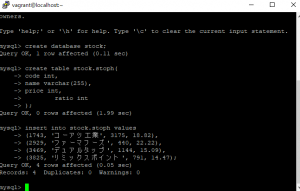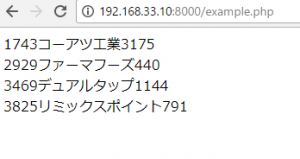PHP Data Objectの略で、php5.1.0以降のデータベース接続クラスの事。GDO(golf digest online)ではありません。
では、まずmysqlにログイン(mysql -u root -p)して、データベースをつくりましょう。サンプルで、ストップ高のテーブルをつくります。
create database stock;
次に、ストップ高のテーブルをつくります。
create table stock.stoph(
code int,
name varchar(255),
price int,
ratio int
);
そして、テーブルにストップ高の銘柄を入れていきます。
insert into stock.stoph values (1743, 'コーアツ工業', 3175, 18.82), (2929, 'ファーマフーズ', 440, 22.22), (3469, 'デュアルタップ', 1144, 15.09), (3825, 'リミックスポイント', 791, 14.47);

では、コーディングしていきます。
<?php
$dsn = "mysql:dbname=stock;host=localhost";
$user = "root";
$password = "";
try {
$dbh = new PDO($dsn, $user, $password);
} catch (PDOException $e){
print('connection failed:'.$e->getMessage());
}
$sql = "select * from stoph";
$stmt = $dbh->query($sql);
while($result = $stmt->fetch(PDO::FETCH_ASSOC)){
print($result["code"]);
print($result["name"]);
print($result["price"]);
print($result["rate"]."<br>");
}
?>

new PDO とは、PDOのクラスをつくっています。
$dbh->query($sql) は query(※実行)のメソッドに$sqlを代入しています。
$stmt->fetch(PDO::FETCH_ASSOC)は、厳密には、$dbh->query->fetch(PDO::FETCH_ASSOC)ですね。


